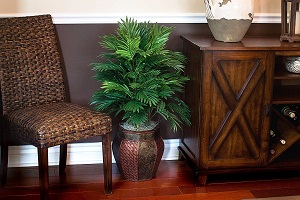Among the famed 8 auspicious objects in Buddhism, nothing divides opinion like the victory banner.
This can be observed from the variety of shapes and forms the banner of victory can take up in retail merchandise ranging from bell shapes, flat-curves, flat-straights, parasol-like, etc.
This confusion is further puzzling when even though the object can be found on the Buddha’s footprint relic, there is no specific mention of it (rgyal-mtshan) in classical Tibetan literature.
Because of this, some researchers even hypothesize that it as an enhancement of the parasol.
However, the mere fact that the victory banner has unique features by itself and can be found on all types of architecture and monasteries show that it carries with it a significant degree of symbolism.
It must be noted though that the banners are varied in design on different buildings (especially on roofs) but bears the same unmistakable resemblance to a victory banner.
Sometimes also referred to as the victory flag or victory sign, the distinctive feature of the victory banner is the layers of textile that make up the banner as a whole.
It is said that when Buddha achieved victory over the universe in the classic story line of wisdom over ignorance, the victory banner was planted on the summit of Mount Meru as a declaration of conquest.
This is after defeating the 4 Maras that are barriers in the journey to enlightenment:
- Emotional defilement
- Passion
- Fear of death
- Pride and lust
The selection of this location is also due to it being the axis that links the universe of the physical, mental, metaphysical, and spiritual worlds.
In ancient Indian history, the victory banner is known as the dhvaja and a symbol of champion fighters in the military.
It is also reported that the Russian military used it as one of the celebratory banners after emerging victorious in World War 2.
It must now be of no questions as to what the banner of victory represents.
It is the pinnacle sign of victory over oneself or against competitors and enemies.
Where to place the victory banner
As this is symbolic feng shui and meant as a declaration of triumph over adversity, it should be placed in a prominent location of the house or office.
The center of the property would be a good area, so is any of areas where you display trophies and achievements.
For better potency, do not keep them in enclosed furniture such as a display cabinets. This is even when there is a glass door that makes the items inside observable from the outside.
You’d want your competitors see it and sub-consciously submit to defeat by you.
You can also put it on your work desk to become a conqueror at work.
It can also be placed in the south sector of the house as this is the area where your recognition and status luck can be enhanced.
When annual flying star arrangements are taken into consideration, the stars 1, 4, 8 and 9 can reap greater benefits when they meet the victory banner.
The 1 star can help advance career luck and bring opportunities of mentorship. The 4 star can bring academic success while beating other students in competitions, the 8 star can bring wealth luck and getting one over competing colleagues or businesses. And the 9 star can bring recognition at work and in social life by surpassing others.
When self-development and personal growth is your priority, positioning it in the northeast as this is the area of actualization and inner-strength according to the feng shui bagua map.
This will help you overcome self-limiting mindsets, fear, and barriers preventing you from becoming the best version of yourself.
Carrying it with you
With the unique metaphysical abilities of the victory sign, jewelers have designed pendants, bracelets, medallions, ear rings, etc, incorporating the banner into it.
If you are considering buying one for yourself to wear everywhere you go, the ideal material is to get them in gold.
This is because the chief purpose of the victory flag is to signify winning in competitive situations.
If you buy one in sterling silver, it will be akin to standing second on the podium instead of first. And you don’t need to guess what getting one made of bronze would mean.
Finally, it is not recommended to have too many of them as feng shui is all about balance.
Having a concentration of such energy can potentially entice the symbol to work for itself rather than for you. Just as water is good for you but too much of it can also lead to water poisoning.
In fact, one at home, one at the office, or one to carry around should sufficient to harness the powers that the symbol innately carries.
Or even better, have it as one of the 8 auspicious items would bring a lot of balance without having one with overbearing power and influence.















